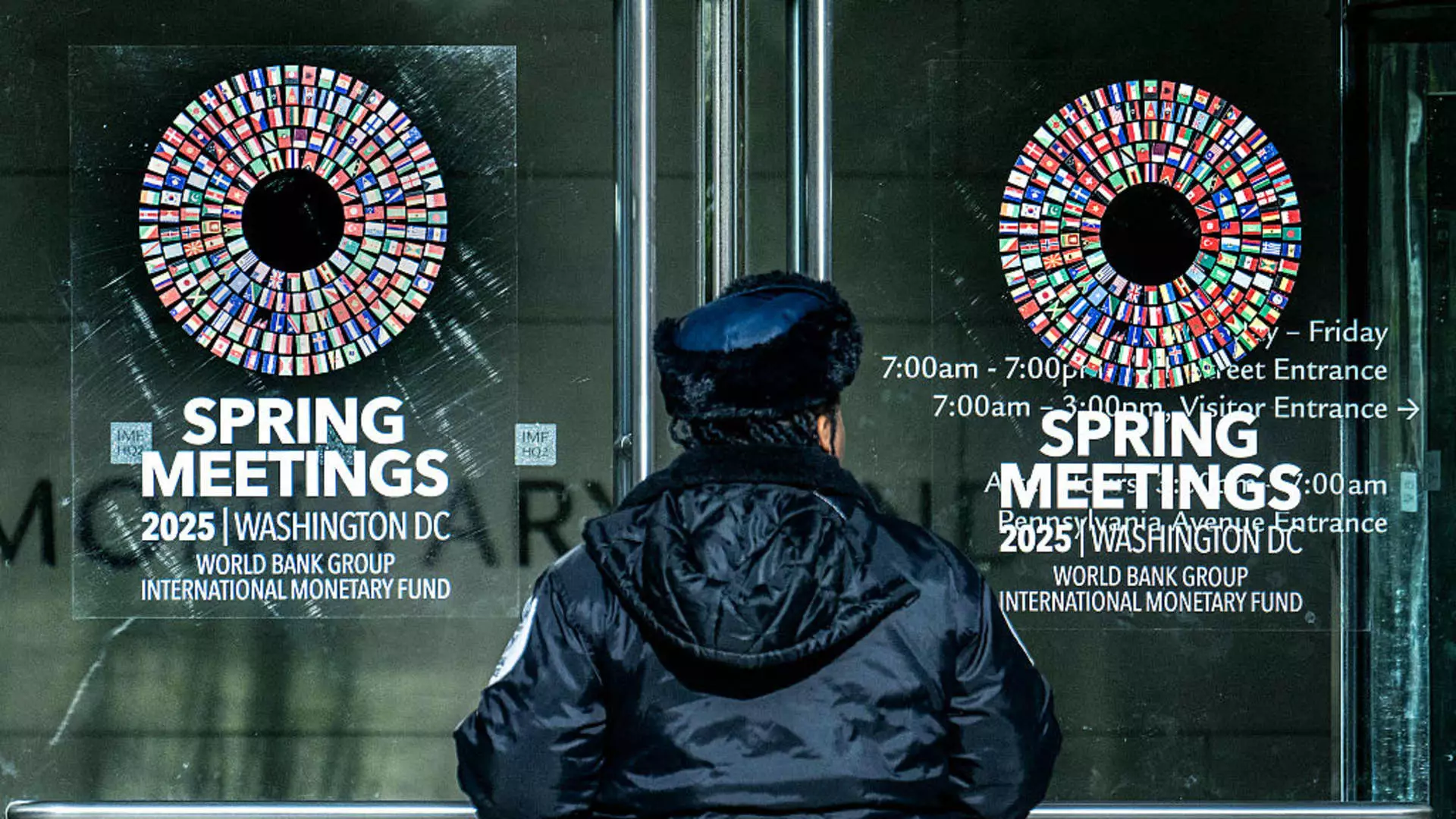The latest assessments from the International Monetary Fund (IMF) highlight a grim reality for the future economic landscape of major Asian economies. After being at the forefront of global growth, the forecasts for nations like China and India, traditionally viewed as titans of economic expansion, have been marked down to alarming lows. The IMF’s downward revision of China’s GDP growth prediction to 4% from an already modest 4.6% and India’s forecast to 6.2% from 6.5% paints a worrying picture. This isn’t merely a statistical adjustment; it’s a reflection of deep-seated uncertainties that threaten the backbone of these economies.
China’s growth target, set at “around 5%” for 2025, suddenly feels like an insurmountable challenge. Meanwhile, India, despite its ambitious dreams, finds itself tethered by rapidly escalating challenges, both internal and external. It is as though the very essence of these economies is being strangled by an ever-tightening noose of trade tensions and policy vacillation. The IMF’s caution suggests a storm brewing that could lead to even more drastic revisions in the near future, a notion investors should not take lightly.
The Trade War: A Catalyst for Uncertainty
At the core of this economic malaise lies the tumultuous trade relationship between the United States and its global partners. The IMF’s report underlines tariffs imposed by the U.S. as a primary culprit for the unsettling changes in growth forecasts. These punitive measures, characterized by unpredictability and abrupt changes, have introduced a chaotic element into worldwide trade, solidifying fear and uncertainty among nations. The IMF warns that this volatility has stifled economic activity, making planning and forecasting an exasperatingly difficult task.
In an era where sustained growth is paramount, trade wars act like weighty anchors, dragging down the ships of prosperity. The steep tariffs levied on Chinese goods—up to an astonishing 245%—coupled with China’s retaliatory measures of 125% on U.S. imports demonstrate a vicious cycle of economic aggression that may not only impact bilateral relations but also have a ripple effect throughout the global economy. Such deliberate hostility contradicts the necessity for international cooperation in an increasingly interconnected world.
Japan and India’s Dilemma: Seeking Pragmatism
Amidst this escalating economic war, Japan and India seem to tread a different path. Both nations are showing signs of cautious diplomacy in their dealings with the U.S., attempting to defuse tensions through negotiation rather than confrontation. Japan’s trade delegation to the U.S. aimed for discussions, revealing a recognition of the significant economic stakes involved. Yet, the reality of negotiation has proven disheartening, as reported dialogue yielded little more than a symbolic effort to address grievances. The regret voiced by Japan’s top negotiator echoes a larger sentiment—tribalism in trade policy is counterproductive.
Prime Minister Narendra Modi’s approach mirrors Japan’s conciliatory stance, laments over his meeting with U.S. Vice President JD Vance resonate among those who realize that simply wishing for trade harmony is insufficient. Both countries appear to clamor for a sustainable economic roadmap that allows for growth without the looming threat of tariffs. However, navigating this turbulent landscape—characterized by aggressive posturing from the United States—remains a monumental challenge.
The Global Picture: A Downward Spiral
The IMF’s global growth projection drop to 2.8% from a previous 3.3% casts a shadow over the optimism once surrounding recovery from past economic challenges. The outlook for 2025 is layered with trepidation as countries watch the situation unfold with bated breath. This is not just a localized issue; the economic fabric of nations is becoming frayed. The confluence of crises arises not merely from poor economic policies but from failing to acknowledge the interconnectedness of our economies.
Today’s world stands at a precipice, and the need for cooperation rather than hostility cannot be overstated. The stakes could not be higher, and the implications for international trade and relationships will likely define economic trajectories for years to come. Without a concerted effort to resolve these tensions, the economic future remains shrouded in worry, marking a troubling chapter in the annals of globalization.

